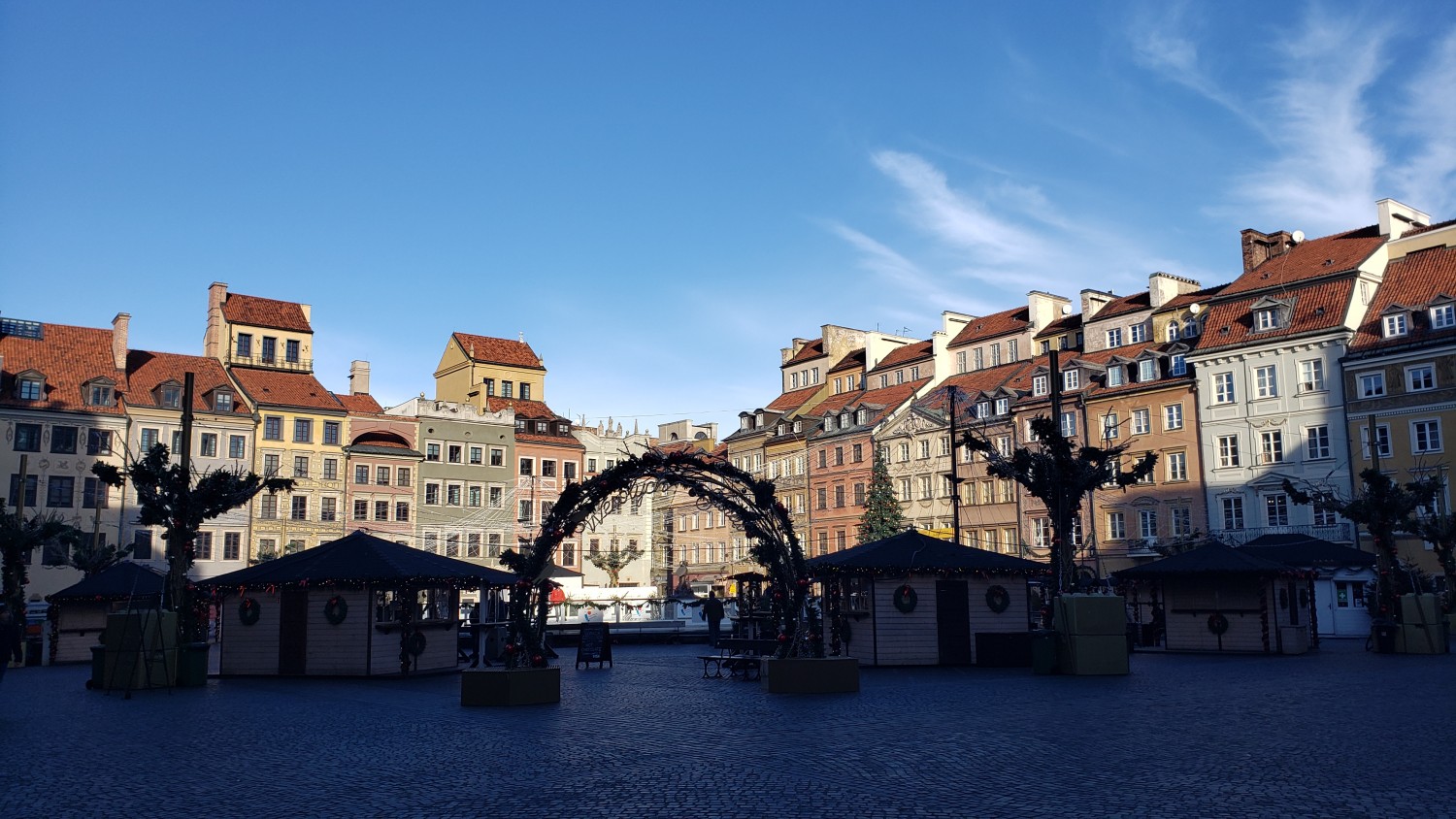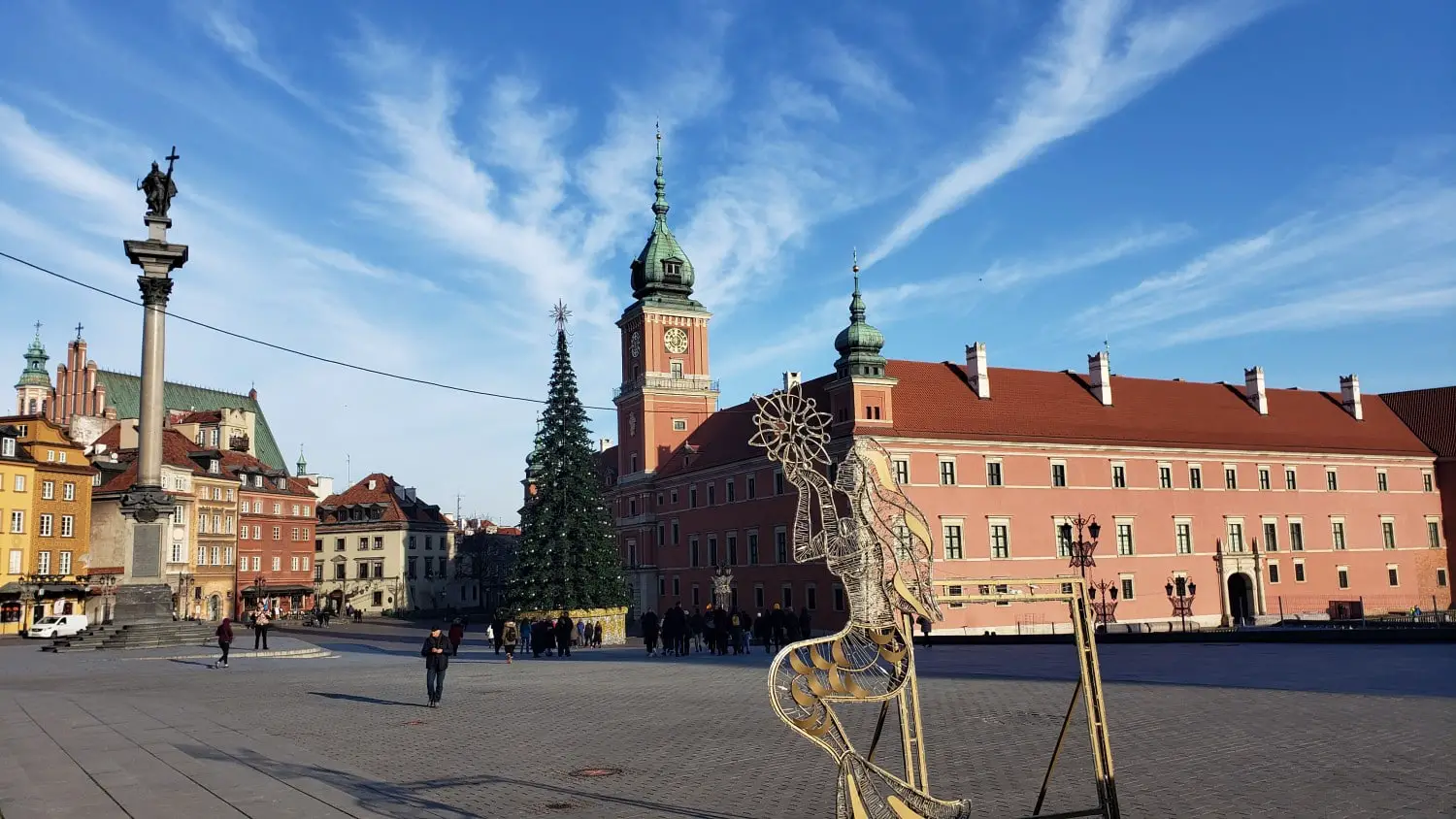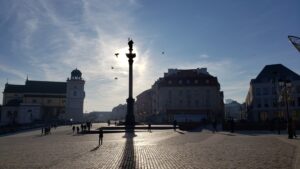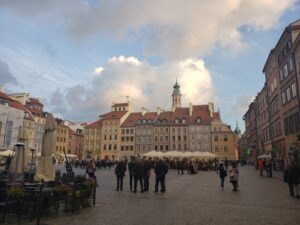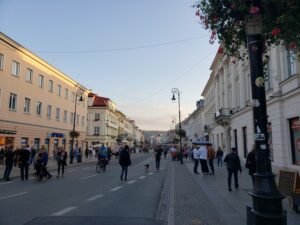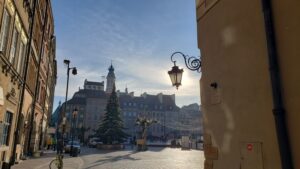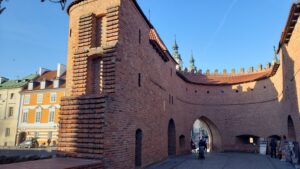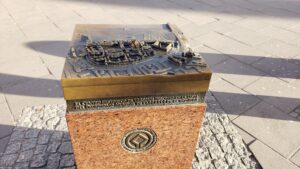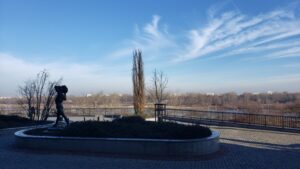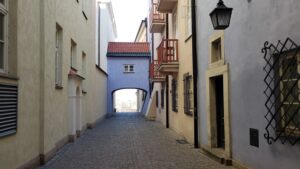While I was on study abroad in Warsaw, Poland, the place I visited most behind the Palace of Culture and Science, where I had classes every day, was Old Town. Why? Simply put, a trip to Old Town in Warsaw is like taking a journey back in time. It is the gem of the city in my opinion, and a must-visit while in the city for a weekend or a semester on study abroad. In this article I will walk through the tumultuous history of Warsaw’s Old Town, what it’s like visiting today, some major landmarks, and finally share pictures of this beautiful district of Warsaw.
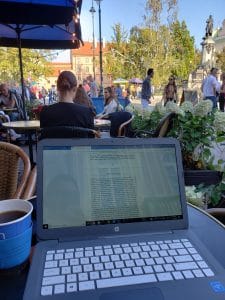
History
Warsaw’s Old Town first began towards the end of the 13th Century when the first kings of Poland, the Dukes of Masovia, built the Royal Castle on a hill overlooking the Vistula River. Over the next century, the city grew to the North and Old Town Market Square was developed. The royal residence of Poland moved from Warsaw to the city of Krakow, and Old Town changed. It became much less desirable to live in and became a poor district. After some time, the royal residence returned to Warsaw in 1596 and Old Town was renewed. The king made massive investments that brought forth the brightest and best times for Old Town. It became a very pleasant place in the 18th century, and this is what Old Town is modeled after today.
In 1939 when the Nazis began the invasion of Poland, they began with terror bombing, a horrific technique they debuted in Warsaw. The Nazis wanted to destroy things of local cultural value as part of their psychological warfare. They thus purposefully raised Old Town with bomb after bomb to the ground. In 1944, to punish the city for the Warsaw Uprising and make an example for other cities to witness, Hitler leveled most of what was left of Warsaw.
When the Soviets drove out the Nazis, they began rebuilding Old Town as part of a campaign to gain local support and retain influence over the area. Practically nothing was left. However, luckily, in the 18th century the king of Poland hired a painter to make paintings of the entire Old Town. These paintings, done by Italian artist Bernardo Bellotto were used as the model that attempted to reuse the original brickwork that was scattered across Warsaw to reconstruct the buildings and make it look as close its historical image as possible. Most of this historical reconstruction ended when Stalin died, but by then the main portions were complete, and the beautiful Old Town we see today was the result.
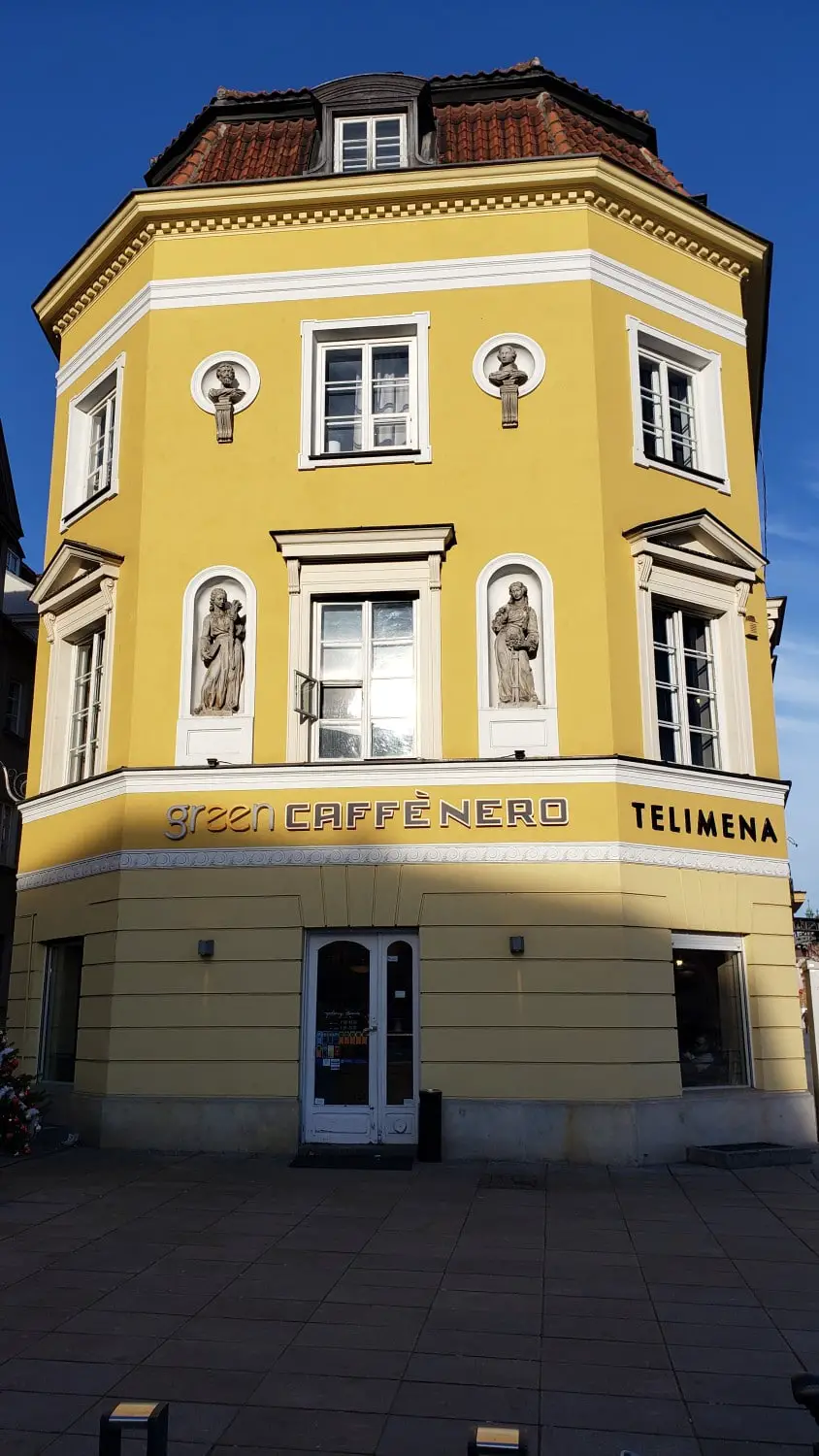
Warsaw’s Old Town feels very different to other older European cities. It is technically one of the youngest old towns in Europe, at only about 75 years old. This newness is readily apparent and there is no visible damage from the past wars, the likes of which can be seen in cities like Krakow or Gdansk. Interestingly, the new feel of the Old Town is quite nice. It brings a clean atmosphere and showcases what the ideal 18th century European Old Town would look like.
A Walk Through Old Town Today
The Old Town today is a lively, inviting place; it often hosts events, street performers, locals enjoying the atmosphere, and tourists experiencing all Warsaw has to offer.
Nowy Swiat Street is the center of the district and serves as an artery of foot traffic on weekends when Varsovians (native residents of Warsaw) are out for a stroll. This street feels insulated from the rest of the city. There are no towering, modern, glass skyscrapers overhead; nor the cold, square, steadfast communist-style buildings. Instead, the buildings are only three to four stories; and have a softer, older, and brighter architectural style. Attractive shops and restaurants line the street. Make your way north on Nowy Swiat until you come to the square in front of the old palace, you’ll see a tall column with a statue of King Sigismund on it as well as the Royal Castle.
The Royal Castle is a common meeting point for both tours and locals. Street performers and musicians can regularly be found here. Iconic views of Warsaw span out around the square with the Vistula River and National Stadium in the background.
Just North of here, take the second side street on your left, named Świętojańska. Going up this quaint street you’ll notice the large brick facade of St. John’s Archcathedral. This is one of the most historically famous churches in Warsaw, and this is a great spot to get out of the cold for a bit if touring in the winter. Exiting St. John’s, make a right and head into the Old Town Market Square. The area here will be open and is primarily a pedestrian zone, but there are still locals who live in the Old Town and drive their vehicles through, so be a little mindful about that and stay on the sidewalks.
Standing in the Old Town Market Square, one feels completely transported to an 18th century Warsaw. The buildings are lined with beautiful façades and the streets with restaurants, various art studios, local small businesses, and gift shops. Located in the center is the famous mermaid statue, a majestic depiction of the legendary protectress of the city.
The Old Town square changes with the seasons; in the summer, open air seating for the restaurants and cafés make it a nice place to grab a meal or stop for a drink. In the winter a circular ice rink is built around the mermaid statue, beautiful Christmas lights are strung overhead, and stalls that sell all festive treats like mulled wine, hot beer, gofry, and more are open for business. No matter what time of the year, the Old Town square offers an unrivaled charm found nowhere else in Warsaw.
Now take Jezuicka Street on the east side of the square to head south. A little way up on your left you will see an Oki-Doki Hostel; stop before this and turn left to take in Dawna Street, the most filmed street in Warsaw because its relatively closed off but offers a great setting for a historical European street. Instagram accounts love this street as well as lovers too – who come here to attach locks to the railing and throw away the key, a symbol of everlasting love. This is also, ironically, where the Old Town trash dump used to be, behind the houses facing the square. On the overlook you’ll also notice an impressive sculpture of Sisyphus holding his boulder.
Once finished here, head north and walk along the Old Town wall until you get to another lookout point that offers a sweeping view of the Vistula and the fountain park below. From here, turn west and follow the wall to a large circular brick structure connected to the wall; this is the Barbican. This is a remake of the Italian designed barbican used to defend the walls of the Old Town. If you walk through the barbican; stopping to admire the quite affordable works by local artists, you will exit and come to a small 3-D map of Old Town. Here you can see where you have been in Old Town, and what you still have left to explore. At this point you could grab a meal at Podwale, a nearby traditional Polish restaurant that comes highly recommended by locals, before heading back into the Old Town to keep exploring.
Tips on Exploring
The Yellow Umbrella tour company runs free walking tours throughout all of the major cities in Poland, and they are phenomenal! I did the Old Town tour twice and both times were educational, interesting, and entertaining. The tour guides are locals and do a great job explaining not only the Old Town, but Warsaw too. And yes, the tours are completely free! Tips are appreciated at the end, of course. Tours meet daily at 10am and 2pm next to King Sigismund’s pillar; just look for the person with the yellow umbrella.
If you are looking for a flat while staying in Warsaw, Old Town prices are considerably cheaper than in the city center and, with the great public transportation throughout Warsaw it makes getting around the city quite easy. A great advantage of living here, besides the historical beauty and local culture, is how quiet it is: no cars, no buses, and no major bars or clubs that draw out a night crowd.
As I said at the beginning of this article, the Warsaw Old Town is the city’s crowning gem in my opinion. I took countless trips to Old Town; on runs, for drinks, dinner, and just to get away from the “big city” feel from living in the center. Even if you’re visiting Warsaw for just one day, come see Old Town; if you are here for a semester come as often as you can.
